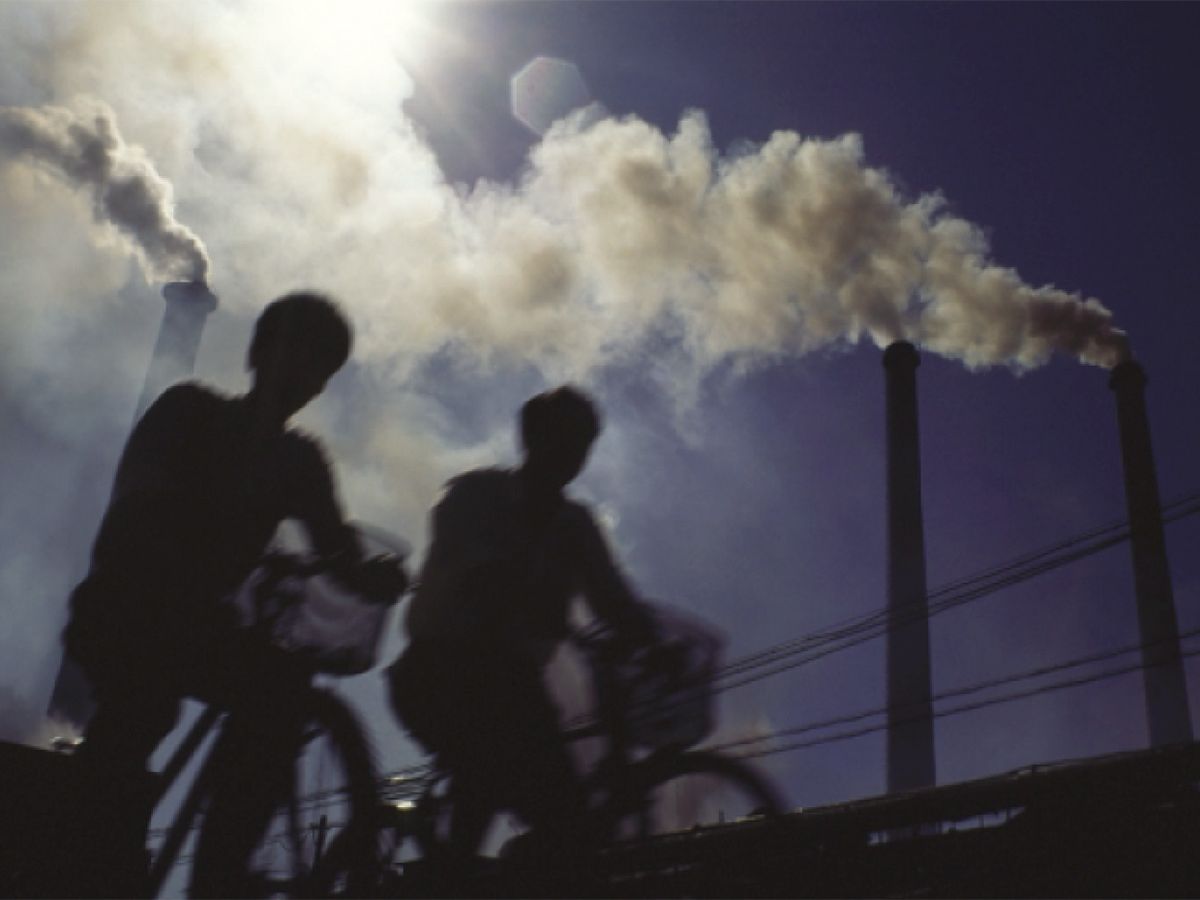A Market for Clean Air
China adopts emissions trading to curb pollution

As it hurtles toward becoming the largest economy in the world, China can barely keep up with its booming energy demand. But the nation is starting to address the dark side of the boom: the pollution spewing from coal plants that is taking its toll on the environment and on human health.
In fact, the open-market economy that is driving China's soaring demand for energy also points a possible pathway to salvation. The Chinese government is now investigating a sulfur dioxide (SO2 ) emissions trading program, a market-based approach to reducing air pollution modeled on a successful U.S. program launched in 1995. The U.S. “cap and trade" program sets a limit on how much SO2 a factory or power plant can emit. A facility that produces fewer emissions than the maximum allowed gets the difference as a credit, which it can sell to companies that cannot meet the cap.
China is the world's biggest emitter of SO2 , a compound that combines with water vapor to form acids. About 30 percent of the country's territory—an area slightly larger than that of India—is affected by acid rain, which damages forests and buildings, harms crops, and can wipe out freshwater ecosystems. Joint research by the Chinese Research Academy of Environmental Science and Tsinghua University in Beijing showed that in 2003, acid rain caused China a direct economic loss of more than 110 billion yuan (US $13.2 billion). Sulfur dioxide also causes breathing problems, can lead to respiratory diseases, and can aggravate heart disease.
Using the cap-and-trade program, China aims this year to reduce SO2 emissions nationally by 10 percent from its 2000 levels and by 20 percent in certain heavily polluted areas. “What's going on in China in terms of setting a national cap on SO2 is a pretty dramatic and underrecognized environmental revolution," says Daniel Dudek, a chief economist at Environmental Defense, a nongovernmental organization based in New York City.
Dudek, who has been instrumental in establishing the trading programs in China and the United States, notes that Chinese government officials have been thinking about the country's environmental problems for a while. The government took a bold step in 1996 by capping SO2 emissions at 20 million tons. The State Environmental Protection Administration, China's equivalent of the U.S. Environmental Protection Agency, was put in charge of regulation, with its local bureaus enforcing the rules.
Dudek points out that the emissions cap reflects one of the pluses about the way things work there. “In China, because of a central government controlled by a single party, they can directly dictate to sources when something has to be done," he says. “They said, 'We're going to control acid rain: here's the goal.'" In comparison, the U.S. decision to set a cap on SO2 took more than 10 years of intense debate.
China met its SO2 goals in 2000, and soon after, Environmental Defense trained Chinese policymakers and enforcement officials on how to trade emissions. A year later, Dudek and officials from the State Environmental Protection Administration successfully brokered the first trade in Nantong, an industrial city in Jiangsu province. The program has since extended to all of Jiangsu, Henan, Shandong, and Shanxi provinces and to the cities of Shanghai, Liuzhou, and Tianjin, which altogether produce nearly a third of the country's SO2. So far, 10 trades have been completed.
Developing a mature SO2 emissions market, however, might take a while. “In the U.S., emissions have become a standardized commodity, much like wheat or corn," says Richard Morgenstern, a senior fellow with Resources for the Future, a think tank in Washington, D.C. The U.S. system has evolved from brokered trades between individual facilities to a standardized system where companies go directly to the market, often trading online.
In 2002, Morgenstern helped set up an experimental standardized trading system in Taiyuan, a heavily industrialized city some 500 kilometers southwest of Beijing. The program has been a disappointment. “There have been three or four trades conducted so far," he says, “but not the full-scale trading that we had originally envisioned."
He attributes the slow progress in Taiyuan and elsewhere to the absence of a strong enforcement system. Penalties for polluters are weak: there is a maximum fine a facility has to pay, and once it exceeds this limit, there is no further check on emissions. Dudek added that because China is new to an open-market economy and doesn't yet have strong legal or judicial institutions, emissions trading is more challenging than in the United States.
Even so, Dudek and Morgenstern agree that China is on the right track in tackling its health and environmental problems. The government's support of the SO2 emissions trading program “represents a very different way of thinking about the environment," says Dudek, who recently received the Chinese government's National Friendship Award, the highest tribute to foreign experts. “[It's] a shift from short-term to longer-term thinking."